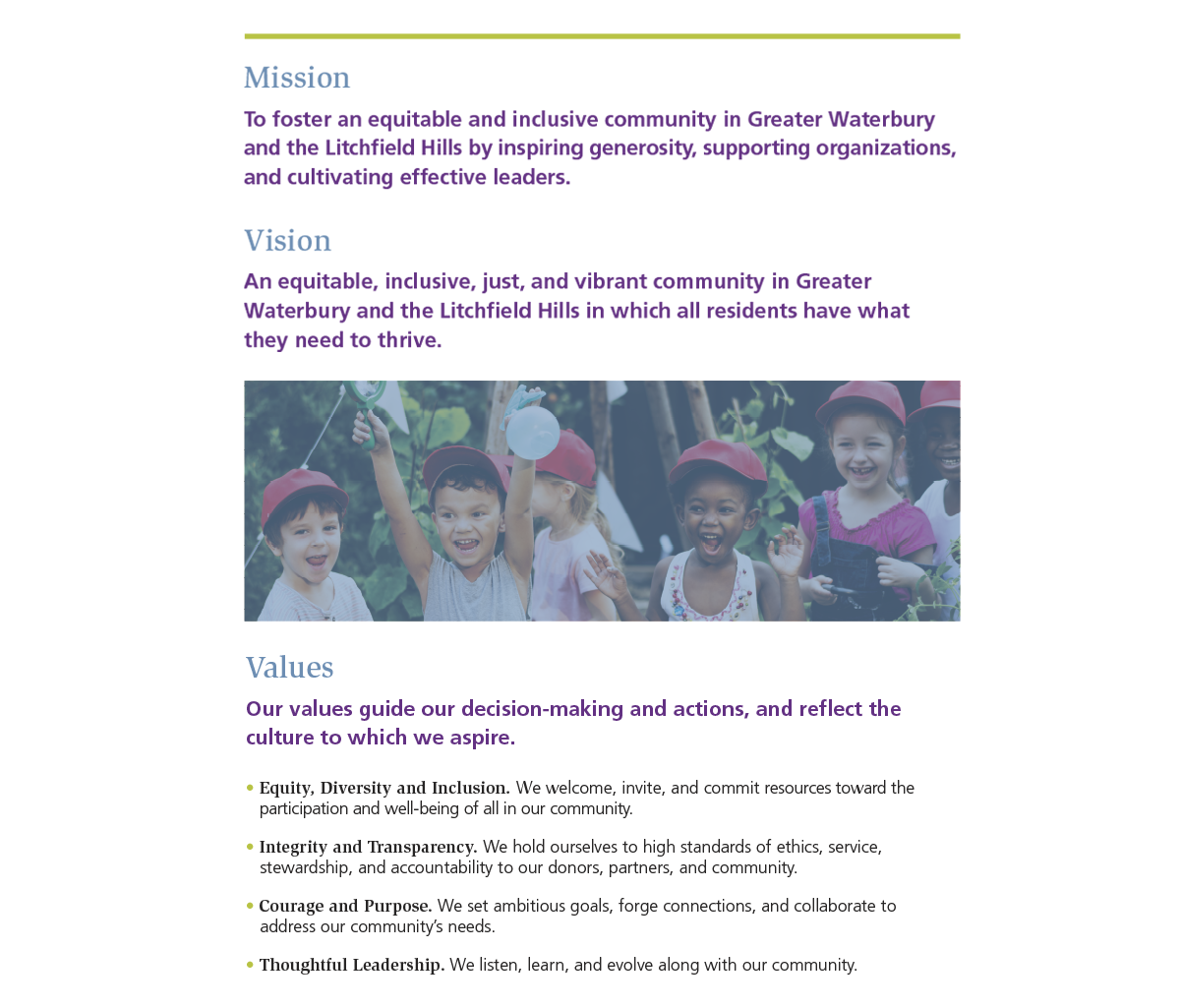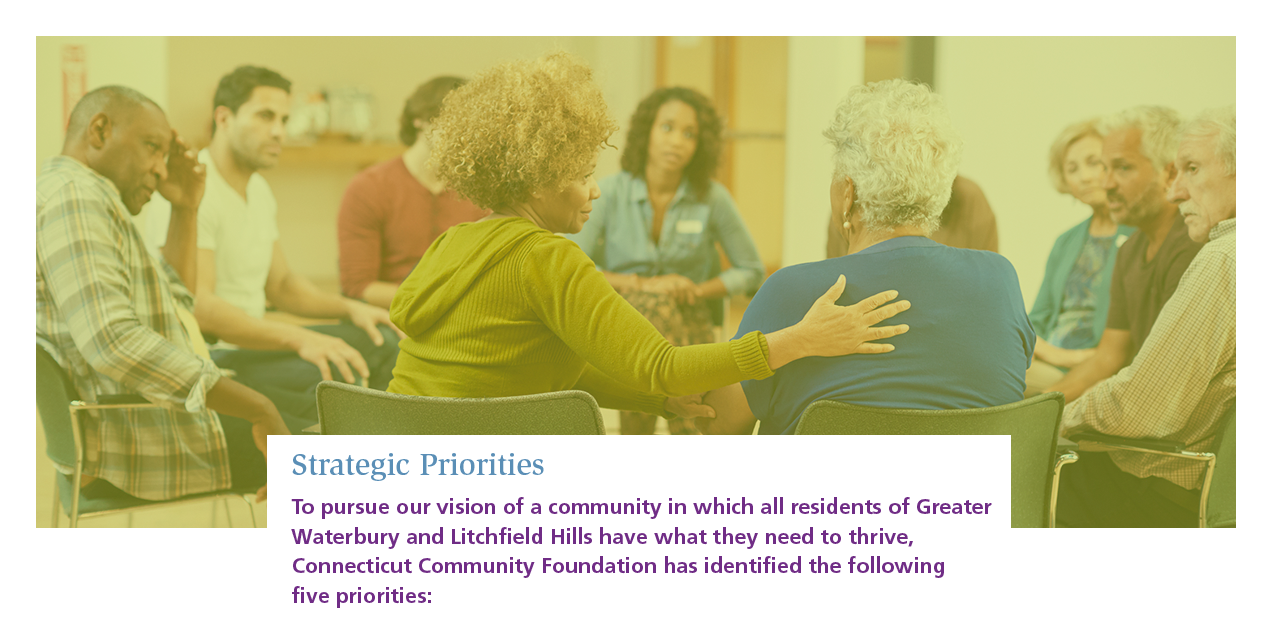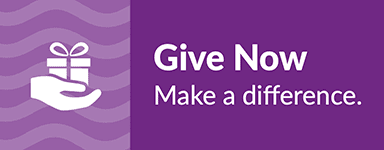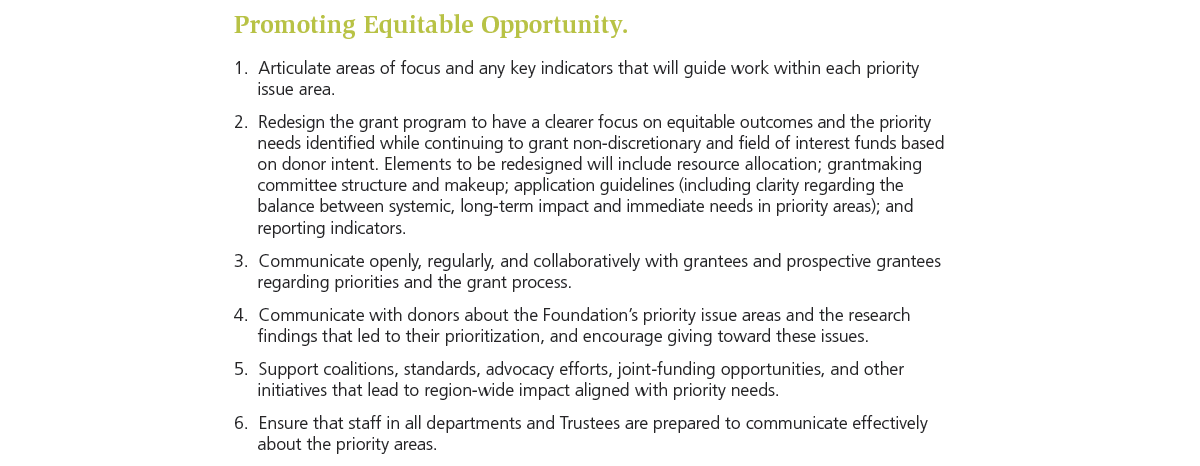
Charting a new strategic direction: the challenge and the opportunity
Connecticut Community Foundation has worked for decades alongside organizations, leaders, and donors alike to step up to local challenges and improve the quality of life throughout the region. We have a long legacy of local impact, through grants, scholarships, philanthropic services, and on-the-ground work with many partners. And we have spent nearly a century learning, evolving and transforming to meet the changing needs, first of Waterbury, and now of the broader Greater Waterbury and Litchfield Hills region. During 2019, we embarked on a robust strategic planning process to determine how we can most effectively use our resources—human as well as financial—to serve our community in the coming years.
Read MoreWhat we explored
Over the course of the planning process, we surveyed nonprofits, donors, volunteers, local leaders, and other community members to understand how people perceive the Foundation’s work and to get feedback on the biggest challenges the community and the nonprofits that serve it are facing. We also conducted focus groups and one-on-one interviews.
Finally, we looked inward, engaging board and staff in multiple conversations about who we are, what we stand for, and how we can make the greatest difference. Altogether, we heard from hundreds of community members from all over the region and from diverse walks of life, each of whom shared their perspective to inform our new priorities.
Read MoreWhat we heard
The community’s responses in interviews, focus groups, and surveys aligned with what we saw in the data. Asked to prioritize, survey respondents identified health, education, and economic opportunity as top needs. And they told us they were looking to the Foundation to take a targeted and proactive approach to addressing the stark differences in quality of life and well-being among people in Greater Waterbury and Litchfield Hills based on race, income, age, gender, and geography.
Read MoreOur strategic direction: moving toward a more equitable community
Our planning efforts led us to a vision of an equitable and inclusive community in which all residents have what they need to thrive. To move toward that vision, we will use equity as our touchstone and as the prism through which we will decide how best to marshal our resources to have the greatest impact for the good of the entire community. We recognized that the Foundation has an important role to play in leveraging our region’s overall prosperity and strength to address inequities and create positive change.
Read MoreHow our new direction will change our work
Just as the challenges facing our community have changed over time, our work will change in meaningful ways as we embrace and live our new mission, vision and values. Since adopting our new strategic direction, staff have examined how we allocate grant dollars and staff time, how our grant guidelines will need to change, and how we can ensure that internal policies and procedures to align with our priorities and values. We’re also looking at how we can best partner with donors in areas of shared interest, how we will evaluate ourselves, and how we will communicate with the community about our work.
Read MoreThe path forward
Connecticut Community Foundation is eager to share details of our path forward based on our new strategic direction in late 2020 and early 2021. Communication will include grant and program information as well as how we envision using the many other tools at our disposal to advance our new mission. These include convening, training, advocacy, forging connections, educating and collaborating with partners across sectors.
Read More


Priority 1 Goals

Priority 2 Goals

Priority 3 Goals


Priority 4 Goals











